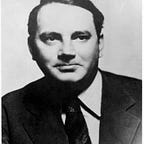Early Lighting in the Old Kentucky Home Boardinghouse
“…he hated most at Dixieland — the dim fly-specked lights, the wretched progress about the house in search of warmth…” — Look Homeward, Angel
When Julia Wolfe bought The Old Kentucky Home boardinghouse in 1906, later immortalized as Eliza Gant’s Dixieland boardinghouse, there was already electric wiring installed. However, there is no specific documentation as to when electricity was installed in the house. There is enough evidence to cobble together an educated guess. The original seven-room core of the house was constructed in 1883. The author of the 1883–1884 city directory noted Asheville was “at present still lighted with the old-fashioned kerosene lamp….,” so the house was not built electrified. While Thomas Edison’s lightbulb was patented in January 1880, it took time for it to become a part of American house interiors. The Asheville Electric Light Company, which included a gas plant, was not chartered until 1886. The Old Kentucky Home was evidently outfitted with gas lighting first. Remnants of gas tubing for chandeliers are visible in the ceilings of some rooms in the house. They suggest that gas lighting was added during the first expansion of the house to 18 rooms by 1890.
By contrast, the early electric wiring is visibly tacked onto the surfaces of walls and ceilings. Since the wiring was not built into the walls and ceilings like the gas lines, it indicates it was not installed until after the 1890 additions. Called “Knob-and-tube” wiring, wires were held in place by ceramic insulators. The system seems strange to the modern eye, but its long use from the 1880s to the 1940s suggests some technical advantages. Since the wires ran separately from each other instead of bundled together, their exposure to air allowed them to cool more quickly and efficiently, allowing the wires to carry more electrical current. The system was also a third of the price of sturdier armored cable with bundled wires. However, knob-and-tube wiring had its share of disadvantages. The practice of tacking wires onto a ceiling made them prone to sagging and stretching, decreasing their usefulness over time. The system also lacked a ground wire, increasing the danger of electrical shock and making the system a general fire hazard.
Between 1975 and 1978, ceramic knob-and-tube insulators and fragments of light bulbs were excavated by archaeologists from a cistern behind the house. The oldest of these dates to just before the turn of the 20th century providing further evidence that the house was electrified before its purchase by Julia Wolfe. An intact light bulb found in the cistern suggests the Old Kentucky Home once used Mazda bulbs for interior lighting. The company name is visible in frosted text on the bulb’s exterior. They were unique for their tungsten filament, patented in 1904 by General Electric, though this bulb was made by Westinghouse Electric. The bulbs began to appear in Asheville at least by 1910 when ads for their usefulness as Christmas lights began to appear in local newspapers. The elongated shape and “squirrel cage” filament design of Mazda is closely replicated by bulbs used in the Old Kentucky Home today.
The Old Kentucky Home’s electricity would have been initially provided by the Asheville Electric Company, formed from the Asheville Electric Light Company in 1897, and later became Asheville Power & Light in 1912. The electrical infrastructure at this time was powered by alternating current, or “AC” power. AC current keeps more of its charge over long distances than direct current (“DC”), making it better suited for expanding residential services. Lights inside the boardinghouse were turned on and off by turn switches on individual fixtures and push-button switches on the walls. Aside from the use of a push-button instead of a flip switch, the light switches in the Old Kentucky Home function the same as modern switches.
To Learn More:
https://www.duke-energy.com/our-company/about-us/our-history (Brief history of electric lighting companies in NC)
https://digital.sciencehistory.org/works/2514nm109 (Mazda light bulb brief history)
https://firstchoiceinspectors.com/what-is-knob-and-tube-wiring-and-why-is-it-a-safety-hazard/ (Knob & Tube wiring information)
